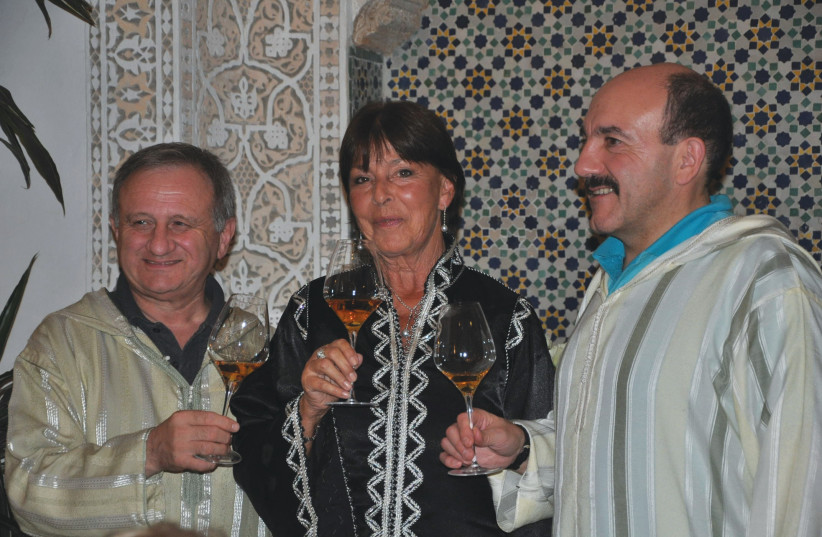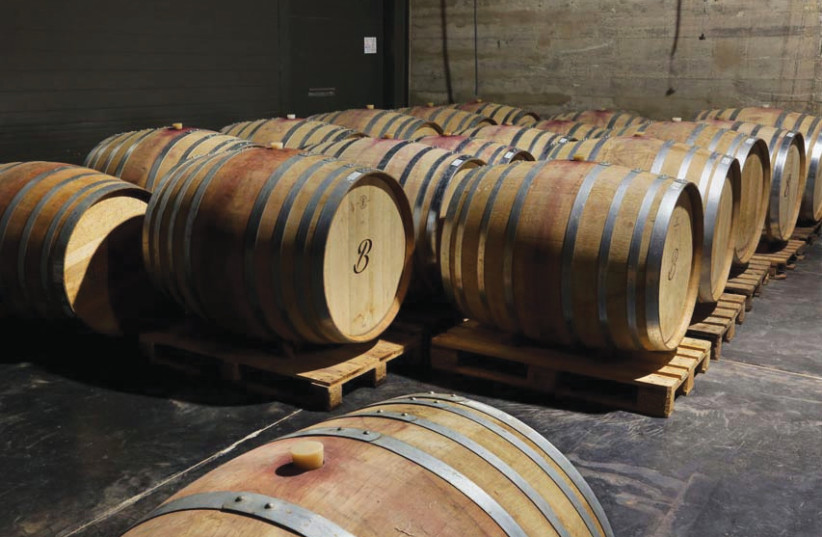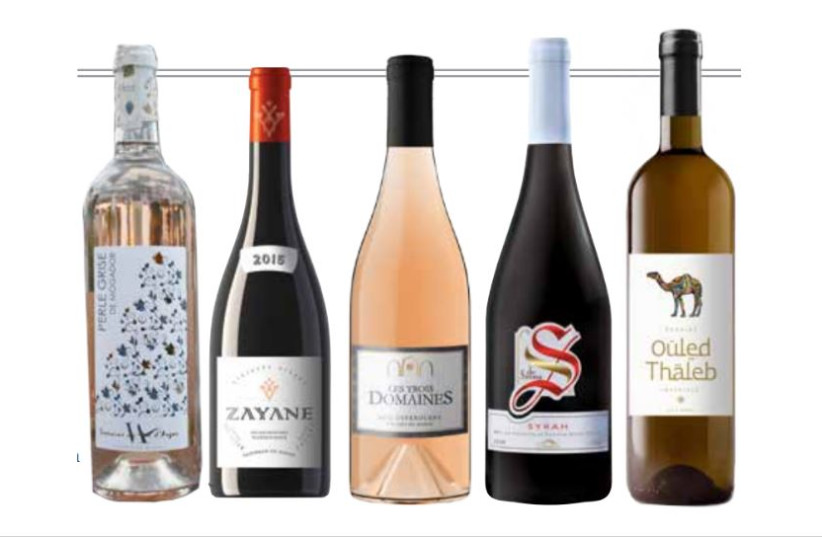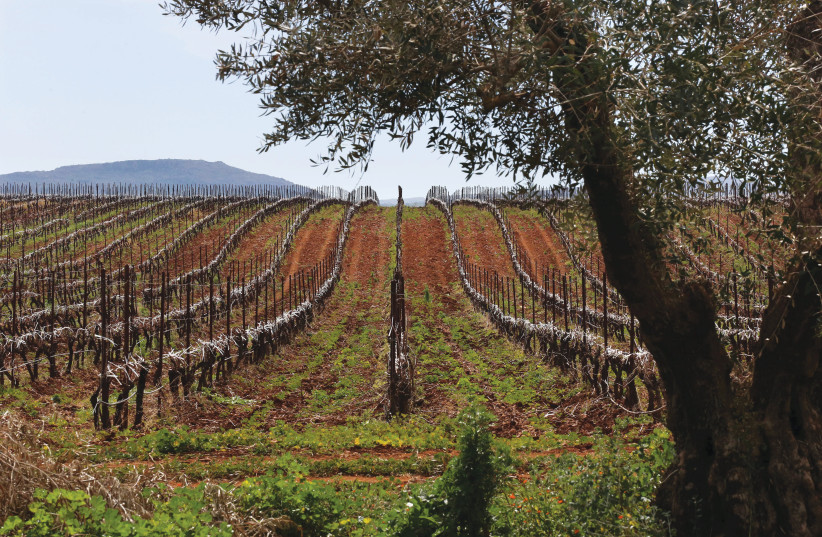I am writing this, dreaming of Moroccan wine while watching the Moroccan football team take the world by storm. The prompt is the news that Moroccan wine is being imported to Israel. Shaked, Israel’s leading importers, are listing seven wines from Cellier de Meknes and Thalvin-Domaine Ouled Thaleb. It seems appropriate now, as Israel and Morocco ties warm up, and of course, there is a sizable ex-patriot Moroccan population in Israel.
My interest is increased by my own Moroccan roots. The Sebag part of my family hailed from Mogador, on the Atlantic coast of Morocco, now known as Essaouira. The Montefiores came from the Adriatic coast of Italy. They met in London, and the Sebag-Montefiore family was born.
Morocco is a country with a rich wine history, unrecognized quality and limitless potential. The wineries have to remain low key within Morocco so as not to offend or provoke the Muslim population. Officially, most wines are sold to tourists, but a fair amount must be sold to the local population. Most exports are sent to France, which is like an extended home market. It is a pity they are not better known because the wines are good and deserve greater exposure.
Morocco has a long history of producing quality wines in North Africa. Wine has been made there since Phoenician times. In 1912, Morocco became a French protectorate. Morocco and Algeria in particular became massive producers, shipping containers of inexpensive, deep-colored wines to France, which were hidden by mixing them with French blends to bolster their color. In 1956, Morocco gained independence. Thanks to the vision of entrepreneur Brahim Zniber, the planting of vineyards and building of wineries returned, and Moroccan wine made a comeback.
In a nutshell, the Moroccan terroir is either on the high-elevation foothills (500-600 meter elevation) of the Atlas Mountain range or on the Atlantic coastal area. The Atlas Mountains stretch across the countries of the Mahgreb. The Meknes region is the engine of Moroccan wine.
The main labels you will find on a bottle from this region are Guerrouane and Beni M’Tir. In other regions, you will mostly find Berkane in the north, on the southern Mediterranean; Zaer near Rabat and Zenata near Casablanca are both in the northwest of the country with Atlantic Ocean influences. The region that breaks the paradigm is Essaouira, on the western coast. Overall, there are 14 registered labels of origin.
MOROCCO PRODUCES about 40 million bottles a year (similar to Israel). Contrary to what you would think in a hot country, most of the wine (over 75%) is red (not dissimilar to Israel), but the main wines served chilled are rosés (under 20%). Whites are barely 6% of the production. The grape varieties include classic varieties like Cabernet Sauvignon, Merlot, Syrah, Chardonnay and Sauvignon Blanc. Mediterranean varieties include Carignan, Cinsault, Grenache and Roussanne, as well as a few exotic additions like Arinarnoa, Caladoc, Marselan, Clairette and Maccabeo.
I think Morocco is best known for its old vine Carignans and Syrahs, two varieties that seem well matched for the climate and terroir. There is no lack of old vine vineyards. You will also often find Moroccan rosé, and the even paler, vin gris, among the Morocco export markets.
There are three large companies. By far the largest is Les Celliers de Meknes, which dominates wine in the country rather like Carmel Mizrahi did in Israel up to the 1990s. It is virtually a monopoly. They were founded in 1964 and built up by the late and legendary Brahim Zniber, mainly in the Meknes area. He was the driving force in the recreation of the Moroccan wine industry, the registering of labels and the drive for quality. Their best wines are made at their Chateau Roslane estate, which by all accounts is state of the art.
THE SECOND giant is the Castel Group, the largest wine company in France, which has invested in Morocco since 1994. They market through the company SVCM with vineyards mainly in the Boulaouane and Meknes regions. Their brands include labels such as Larroque, Halana and Bonassia. They offer numerous wines at good prices, with a large proportion destined for export. I have, in the past, tasted L’Excellence de Bonassia and Domaine de Sahari, but I have to admit, none set the pulse racing.
The oldest winery is Domaine des Ouled Thaleb, founded in 1927 at Ben Slimane by Belgian investors. Thalvin took over the winery in 1968. Then in 2001, it was purchased by the Zniber Group, but they still market their brands independently. They produce Tandem, which is arguably the most famous, highest profile Moroccan brand, known as Syrocco in the US. If there is one Moroccan wine you will see on an international wine list, this will be it.
The recently deceased Alain Graillot, an icon of the Northern Rhone, was on a cycling holiday in Morocco when he came across a vineyard planted with Syrah. This prompted the idea to produce a Moroccan Syrah, which he did in a joint venture with Thalvin-Ouled Thaleb. His son continues this today, and the wine is distributed by the French side of the partnership. The wine is known as Syrocco in the US and Israel; everywhere, else as Tandem. I recently tasted the Syrocco 2018, which is already being exported to Israel. It was vibrant, juicy and meaty, with the warmth from the Moroccan sun. Its good quality provides a window into the potential of Moroccan wine.
More interesting to wine lovers and connoisseurs are other wineries such as Le Val d’Argan, Domaine de la Zouina and Domaine de Baccari. Le Val d’Argan is situated on the coast near Essaouira. It is the most southwesterly winery in the Mahgreb. The visionary behind this is Charles Melia, a Frenchman with North African roots. He owns Chateau de la Font du Loup in Chateauneuf-du-Pape. He founded the winery in 1994. He focused only on Rhone varieties and so was a pioneer of both a new terroir and a new style of wines. The reds, particularly the Orian label, are expressions of Rhone varietals.
TWO FRENCH partners from Bordeaux, one of whom named Gerard Gribelin, associated for decades with Chateau Fieuzal of Pessac Leognan, and Philippe Gervoson, who owns Chateau Larrivet Haut-Brion, fell in love with Morocco on a golfing holiday. They created the Volubilia partnership with Domaine de la Zouina in 2002, about 20 km. south of Meknes. Volubilis is an ancient city founded by the Berbers, which contains Roman ramparts.
Today, the wine estate is managed by Gerard’s son, Christophe. They have two main labels. One is called Volubilia, recognized by a metallic silver label; the other is the premium Epicura label of varietals. I have come across the Volubilia Rosé, which is bright, refreshing, with gentle fruit and great acidity. I have not tasted so many rosés from North Africa, but this is the best to date. They are also particularly well known for their extra virgin Volubilia olive oil, which has won major awards, including an award for the world’s best olive oil. You can’t do better than that!
Possibly the most promising winery is Domaine de Baccari at 650 meters elevation, not far from Meknes. The first wine was launched in 2013. The winery employs the services of Stephane Derononcourt, one of the leading wine consultants in the world. A specialist in exotic regions, he also consults in Turkey and Syria, and even for a very short time in Israel. The winery is owned by the dynamic Nahla Bahnini, for whom nothing but the best will do. Moroccan wine is fortunate to have her drive, attention to detail and passion. Their most celebrated wine is the Premiere de Baccari, a Syrah Cabernet Franc blend.
Another winery you may come across is La Ferme Rouge. Jacques Poulain, who previously worked at Thalvin, works there. He is Morocco’s most well-known winemaker. He makes his wine in the Rommani coastal region at 450 meters elevation, not far from the Atlantic Ocean.
I was fortunate to speak with Michèle Astrom Chantôme, a truly legendary figure in the world of sommeliers, sommelier competitions and international sommelier organizations, whose fame and influence transcend far beyond the more parochial Moroccan wine industry. When I asked her where Moroccan wine was going, she told me: “Twenty years ago, no one spoke about Moroccan wine, apart from maybe a little about rosé; but today, the wines have become very good.” She explained that the philosophy of winemaking was more geared to quality and elegance than before.
Of the six wines newly imported to Israel, these were my favorites:
- Celliers de Meknes, Les Trois Domaines Gris 2021 – Made from Cinsault and Grenache, this is a classic Moroccan vin gris, simple but refreshing. Pale pink, a hint of berry fruit on the nose and a fresh, crisp acidity. It comes under the Geuerrouane appellation.
- Ouled Thaleb, S de Siroua Syrah 2020 – From the Zenata region, it was vibrant, fruity, chewy and spicy. Not pretentious, but a nice drinking wine.
- Chateau Roslane, Zayane 2017 – The most interesting wine that has come to Israel is the Zayane, which is a joint venture between Chateau Roslane and Albert Costa, owner of Domaine Vall Llach in Priorat. In the days of the French protectorate, Carignan was the main grape planted, same as in Israel. This wine also comes from an 80-year-old vineyard in the Guerrouane appellation. This showed fruit of red berries and cherries, with a bit of dirt on the palate and was both complex and interesting.
KOSHER WINES are produced by Ouled Thaleb, Domaine de la Zouina and La Ferme Rouge. I have no idea if these are regular production or one-off requests by individual customers. The main kosher brand up to now is Rabbi Jacob, which I tasted once and it was pretty dire. However, I suspect some pretty good kosher wines will be made, which will be of great interest to the American, French and Israeli markets.
To many, the mention of Morocco brings to mind black-and-white scenes from the iconic film Casablanca. “Here’s looking at you, kid!” With wine, food and now football taking front stage, maybe we are being introduced to the new, vibrant Morocco. As far as the wine world is concerned, Morocco is the hidden underbelly, not well known and given more credit for the volume produced under the French rather than for the quality and variety produced today. I, for one, hope this will change.
The writer is a wine industry insider turned wine writer, who has advanced Israeli wines for 35 years. He is referred to as the English voice of Israeli wine. www.adammontefiore.com




